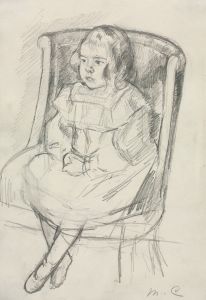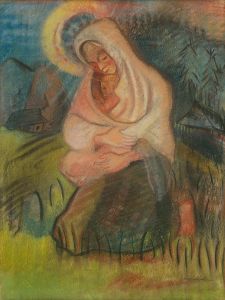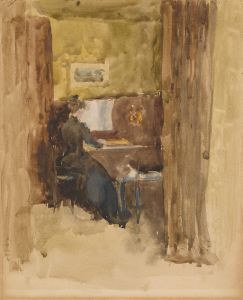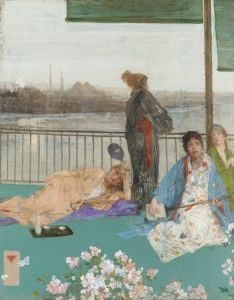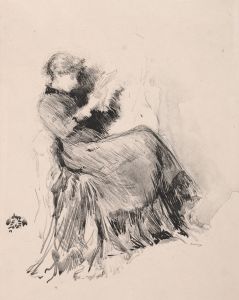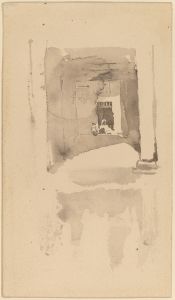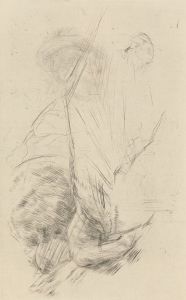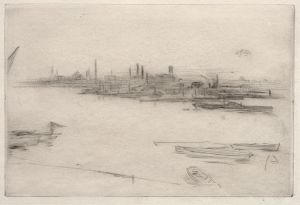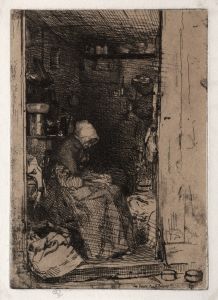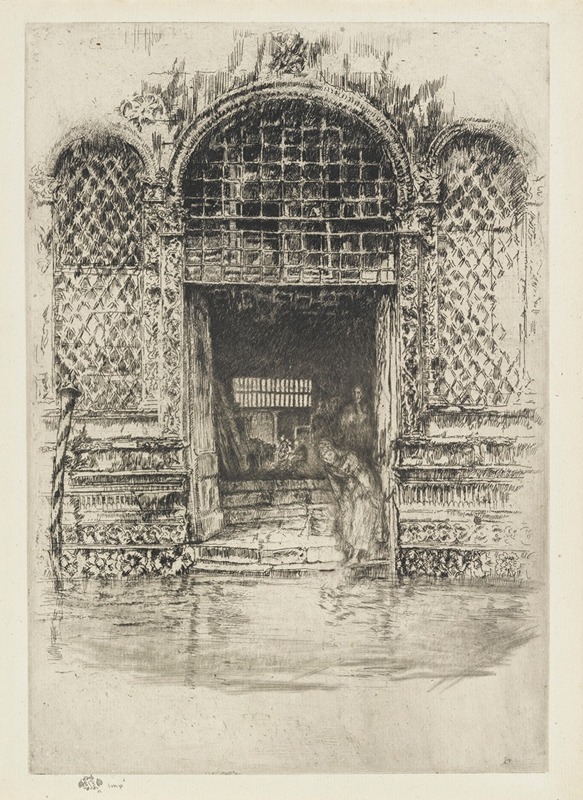
The Doorway
A hand-painted replica of James Abbott McNeill Whistler’s masterpiece The Doorway, meticulously crafted by professional artists to capture the true essence of the original. Each piece is created with museum-quality canvas and rare mineral pigments, carefully painted by experienced artists with delicate brushstrokes and rich, layered colors to perfectly recreate the texture of the original artwork. Unlike machine-printed reproductions, this hand-painted version brings the painting to life, infused with the artist’s emotions and skill in every stroke. Whether for personal collection or home decoration, it instantly elevates the artistic atmosphere of any space.
James Abbott McNeill Whistler's "The Doorway" is an etching created in 1879-1880, during the artist's time in Venice. Whistler, an American artist known for his contributions to the Aesthetic Movement, was invited to Venice by the Fine Art Society of London to produce a series of etchings and pastels. This invitation came at a crucial time in Whistler's career, as he was recovering from a financial setback due to a costly libel suit against the art critic John Ruskin.
"The Doorway" is part of Whistler's "Venice, a Series of Twelve Etchings," commonly referred to as the "First Venice Set." This series captures the essence of Venice through Whistler's unique perspective, focusing on the interplay of light, water, and architecture. "The Doorway" specifically depicts a quiet, intimate scene of a Venetian canal, with a focus on a doorway that opens directly onto the water. The composition is notable for its attention to detail and the subtle rendering of textures, which are characteristic of Whistler's etching technique.
Whistler's approach to etching was meticulous and innovative. He employed a technique known as "drypoint," which involves scratching the image onto a plate with a hard-pointed needle. This method allowed him to create fine lines and delicate details, contributing to the atmospheric quality of his work. In "The Doorway," Whistler's use of line and shading captures the play of light and shadow on the water and the architectural elements, creating a sense of depth and mood.
The scene in "The Doorway" is devoid of human figures, which is a deliberate choice by Whistler to emphasize the timeless and serene quality of the Venetian environment. This focus on architecture and the natural interplay of elements reflects Whistler's belief in "art for art's sake," a central tenet of the Aesthetic Movement. He sought to create beauty through composition and technique rather than narrative content.
Whistler's Venice etchings, including "The Doorway," were well-received by critics and collectors, helping to restore his reputation and financial stability. The works were praised for their innovative approach to capturing the essence of Venice, moving away from the traditional, picturesque views that were common at the time. Instead, Whistler offered a more intimate and atmospheric portrayal of the city, focusing on its hidden corners and the subtle interactions of light and water.
"The Doorway" and the other etchings from the Venice series had a lasting impact on the art world, influencing future generations of artists. Whistler's ability to convey mood and atmosphere through his etchings contributed to the development of modern art, particularly in the realms of Impressionism and Symbolism. Today, "The Doorway" is considered a significant work within Whistler's oeuvre and is held in high regard by art historians and collectors alike.
The etching is housed in various collections around the world, including major institutions such as the British Museum and the Art Institute of Chicago. These collections continue to preserve and display Whistler's work, ensuring that "The Doorway" and his other Venice etchings remain accessible to the public and continue to inspire appreciation for Whistler's artistic legacy.






